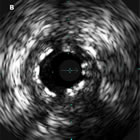
Transradial Coronary Interzentions by Dr. Ferdinand Kiemeneij
Transradial is one of the big buzzwords in interventional cardiology these days. In the United States practitioners recently have been discovering its advantages and have been learning how to perform it successfully. Utilization of transradial in the U.S. has jumped from 2% to almost 25% in less than a decade. In Europe, Japan, India, and China, transradial has been used for years and in most of those regions adoption runs from 50-90% of all catheter-based procedures. In Japan, and now in Europe, a specialized group of physicians has been pushing the limit of what can be done via the wrist artery, using “slender” procedures and equipment, with systems using 3, 4 and 5F sized catheters.
But the heart (pun intended) of this revolution in catheter-based access goes back over two decades to the pioneering work done by Dr. Ferdinand Kiemeneij, rightly dubbed “the father of transradial intervention.” You can read my interview with Dr. Kiemeneij here, but more importantly, you can and should and must read his brand-new hot-off-the-press book, “Transradial Coronary Interzentions,” available on Amazon. Continue reading


 On the occasion of the 20th anniversary of transradial intervention (TRI), I talked with Dr. Ferdinand Kiemeneij, “the father of transradial intervention” who practices interventional cardiology at
On the occasion of the 20th anniversary of transradial intervention (TRI), I talked with Dr. Ferdinand Kiemeneij, “the father of transradial intervention” who practices interventional cardiology at 



